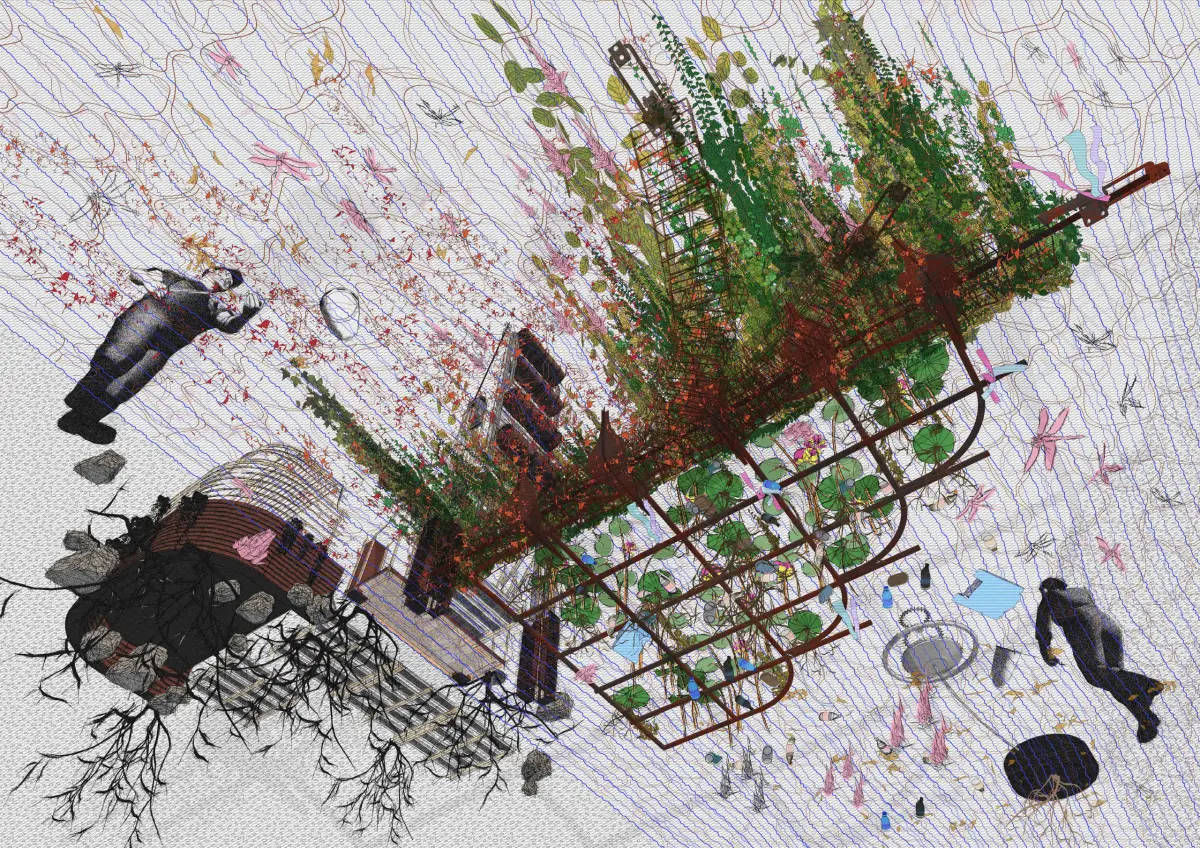
The Inner Coast
BY Rifqi Ashraf Bin Rosali
SUPERVISED BY Assoc. Prof. Lilian Chee (Dr.)
STUDIO THEME REMOTE PRACTICES: A MINOR ARCHITECTURE AND ITS DISTANT ARCHIVES
Abstract
Singapore’s coasts are no longer recognizable as they were. There is a change in the way people currently perceive the coast due to the city state’s developmental emphasis. Thus, coastlines are built up, manicured and privatized. The sea no longer sustains inhabitation, and the island-city’s coastlines are out-of-bound territories. This thesis relooks at Singapore’s interiorised land-water edges—the inner coast—found along a hidden canal in the Clementi Forest. It forges new embodied sensibilities and reengages vanishing archipelagic traditions of foraging.
The Inner Coast is informed by my own site walks through the forest, as I followed the flow of water in the monsoonal drains, from its urban source to where it dissipates and merges within the wild and wooded topography, on its way out to the sea. This inner coast is expressed as embodied knowledge gained through acts of walking, touching, feeling, sensing, collecting, documenting, and experimentally installing detrital traps in the water. Reinterpreting the intimate relations that foragers have with the landscape, the thesis develops its tools to sense the site’s shifting topographies, highlighted through its socio-biological, and meteorological temporalities.
Two sets of interventions, the Lily Propagator, and Monsoon Beacon, are designed to sit lightly within the canal. They amplify the silent movement of drain-water and encroaching monsoonal storms, foraging urban detritus from the water. These instruments make tangible temporal cycles of maintenance, weather, and ecology. They renew our bodily engagements and ecological sensibilities with an inner coast.
Supervisor Comments
The Inner Coast rethinks disciplinary and territorial boundaries—not least because Rifqi’s project provides a reflexive means to rediscover the coastline within island-city Singapore. It reclaims what is often considered extraneous to architectural making, and uses disciplinary tools to express ways of seeing, giving value, and intervening with at-risk and undervalued landscapes. At the Clementi Forest canal, Rifqi utilises a designer’s sensibilities of making patterns and speculative ideas visible by articulating site-specific particularities and species-specific fragilities. His proposition boldly advocates that architecture reconsider how it should deal with and re-value its own interventions and output within these sensitive sites.
- Assoc. Prof. Lilian Chee (Dr.)